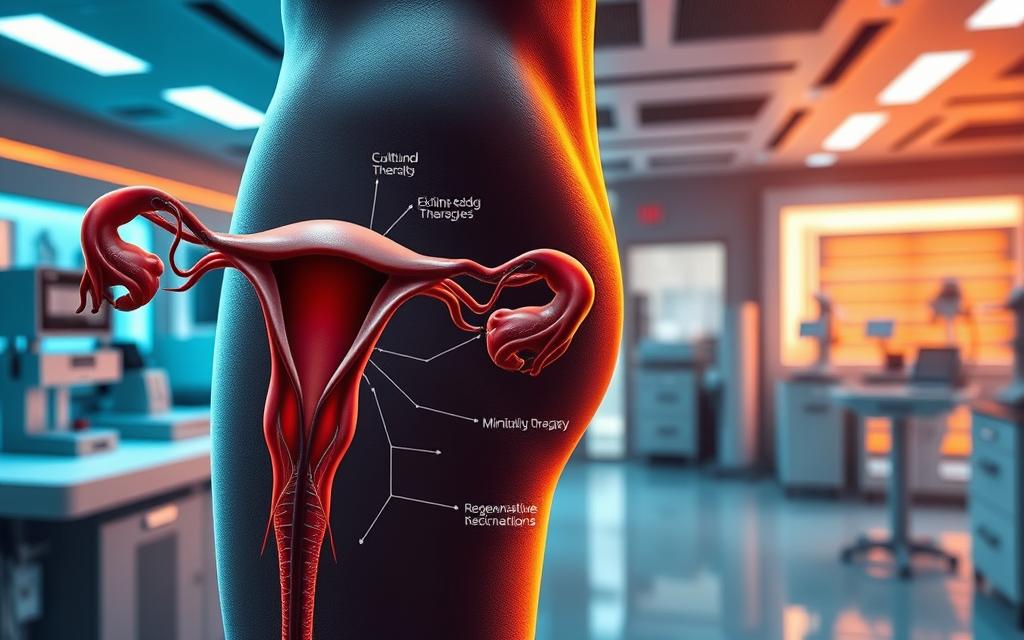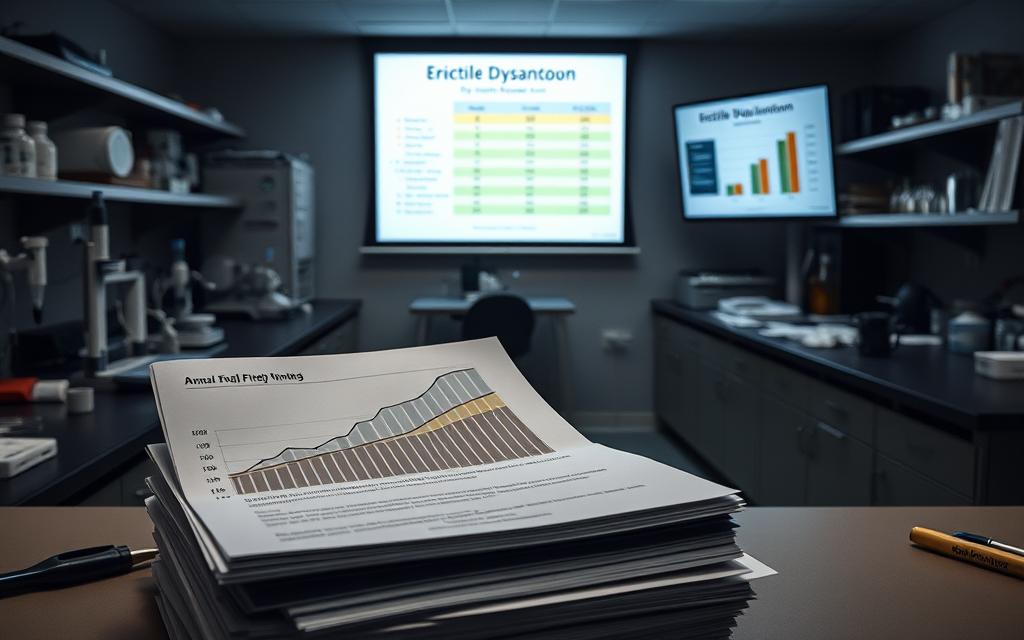Annual Funding for Erectile Dysfunction Research: How Much Is Invested Each Year?
Erectile dysfunction is a widespread condition affecting millions of men worldwide. In the United States alone, it’s estimated that over 30 million men suffer from this condition.
The prevalence of erectile dysfunction highlights the need for continued research into effective treatments. Research funding plays a crucial role in advancing our understanding and developing new treatments for this condition.
Investing in ED treatment research not only improves the quality of life for those affected but also contributes to the broader understanding of men’s health.
The Current State of Erectile Dysfunction Research Funding
Understanding the current state of ED research funding is essential for grasping the advancements in treating this condition. Erectile dysfunction affects a significant portion of the male population worldwide, making it a critical area for medical research.
Overview of Annual Investment Figures
The annual investment in ED research is substantial, with the National Institutes of Health (NIH) being a major contributor. The NIH allocates a significant portion of its budget to ED research, recognizing its impact on public health.
In recent years, the annual funding for ED research has been approximately $150 million. This figure is part of the broader NIH budget, which totals billions of dollars in medical research funding.
Comparison to Other Medical Condition Funding
When comparing ED research funding to other medical conditions, it’s essential to consider the prevalence and impact of each condition. The table below provides a comparison of NIH funding for various conditions.
| Medical Condition | NIH Funding (Millions) |
|---|---|
| Erectile Dysfunction | $150 |
| Diabetes | $1,000 |
| Heart Disease | $1,400 |
| Cancer | $6,000 |
This comparison highlights the relative investment in ED research, showing that while it is significant, other conditions receive more substantial funding due to their higher prevalence or mortality rates.
Major Sources of ED Research Funding
The funding for ED research is diverse, coming from government agencies, pharmaceutical companies, and private donors. This multifaceted approach ensures that research is comprehensive, covering various aspects of erectile dysfunction.
Government Funding Through NIH and Other Agencies
Government funding, particularly through the National Institutes of Health (NIH), plays a significant role in ED research. The NIH allocates substantial funds to studies investigating the causes, treatments, and management of erectile dysfunction. For instance, in recent years, the NIH has dedicated millions of dollars to research on urological health, including ED.
Pharmaceutical Industry Investments
The pharmaceutical industry is another crucial source of funding for ED research. Companies developing treatments for erectile dysfunction invest heavily in clinical trials and research studies. These investments are vital for the development of new medications and therapies. Major pharmaceutical companies have committed significant resources to ED research, driving innovation in treatment options.
Private Foundations and Donors
Private foundations and individual donors also contribute to ED research funding. Organizations focused on men’s health and urological conditions often provide grants for research projects. Additionally, individual donations support research initiatives and awareness campaigns. These contributions are essential for advancing the understanding and treatment of ED.
How Research Dollars Are Allocated
Understanding how research dollars are allocated is crucial for comprehending the advancements in ED treatment. The allocation of funds is a complex process that involves various stakeholders, including government agencies, pharmaceutical companies, and private foundations.
The distribution of research dollars across different areas is a key factor in determining the direction of ED research. The main areas of focus include:
Pharmaceutical Treatments
A significant portion of ED research funding is dedicated to the development of new pharmaceutical treatments. This includes the investigation of novel compounds and the improvement of existing medications. For instance, research into PDE5 inhibitors has led to the development of effective treatments for ED.
Surgical Interventions
Another area that receives substantial funding is surgical interventions. Research in this area focuses on improving surgical techniques and developing new devices that can help treat ED. For example, advancements in penile implant technology have provided new options for patients.
Alternative Therapy Research
Alternative therapy research is also gaining attention, with studies exploring the potential benefits of non-pharmacological interventions. This includes research into lifestyle modifications, physical therapy, and other alternative approaches that may help alleviate ED symptoms.
By allocating research dollars effectively across these areas, the medical community can continue to advance the understanding and treatment of ED, ultimately improving patient outcomes.
Recent Breakthroughs from Funded Research
The landscape of erectile dysfunction treatment is changing, courtesy of recent research breakthroughs. Funded research has led to significant advancements in understanding and treating ED, improving patient outcomes.
Medication Advancements
One of the most notable areas of progress is in medication. New formulations and delivery methods have enhanced the efficacy and safety of ED treatments. For instance, advancements in phosphodiesterase type 5 inhibitors have provided more options for patients, including those who have not responded well to traditional treatments.
Technological Innovations
Technological innovations have also played a crucial role. Advances in device technology have led to more effective and less invasive treatment options. For example, penile implants have become more sophisticated, offering improved functionality and patient satisfaction.

Understanding Underlying Causes
A deeper understanding of the underlying causes of ED has been another significant breakthrough. Research has highlighted the complex interplay between vascular, neurological, and hormonal factors. This understanding has paved the way for more targeted and effective treatments, addressing not just the symptoms but the root causes of ED.
These breakthroughs underscore the importance of continued funding and research into ED. As our understanding grows, so too will the potential for developing even more innovative and effective treatments, ultimately improving the quality of life for those affected by ED.
Alternative Treatments Gaining Research Attention
As research into erectile dysfunction continues to evolve, alternative treatments are gaining significant attention. This shift is driven by the need for more holistic approaches that address the complex interplay of physical and psychological factors contributing to ED.
Physical Therapy Approaches
Physical therapy is emerging as a valuable alternative treatment for ED. Techniques such as pelvic floor rehabilitation can help strengthen the muscles involved in erection, improving function and confidence. Physical therapy for ED is particularly beneficial for men who have undergone prostate surgery or have underlying musculoskeletal issues.
Massage Therapy Benefits for ED
Massage therapy is another alternative approach gaining traction in ED treatment. Specific techniques can enhance circulation and reduce stress, both of which are critical factors in erectile function.
Pelvic Floor Massage Techniques
Pelvic floor massage involves gentle, targeted manipulations to release tension in the pelvic muscles. This can improve blood flow and help restore normal erectile function.
Circulation Enhancement Methods
Techniques aimed at enhancing circulation, such as abdominal and lower back massage, can also contribute to improved erectile function by ensuring adequate blood flow to the penis.
Lifestyle Interventions
Lifestyle changes are a crucial aspect of alternative ED treatments. Dietary modifications, increased physical activity, and stress management techniques can all contribute to improved erectile health. By adopting a healthier lifestyle, men can potentially reduce their reliance on pharmaceutical interventions and improve their overall well-being.
Finding an Erectile Dysfunction Massage Therapist Near Me
With the increasing popularity of alternative therapies for erectile dysfunction, identifying a certified massage therapist in your area is more straightforward than you might think. Massage therapy is emerging as a valuable treatment option for erectile dysfunction, offering a holistic approach to addressing the condition.
When searching for a massage therapist specializing in erectile dysfunction, it’s crucial to consider their qualifications and experience. A well-qualified therapist will not only have the necessary certifications but also a deep understanding of the specific needs related to erectile dysfunction treatment.
Qualifications to Look For in Specialized Therapists
A qualified erectile dysfunction massage therapist should have a recognized certification in massage therapy, such as MTI (Massage Therapy International) or NCBTMB (National Certification Board for Therapeutic Massage and Bodywork). Additionally, they should have experience in dealing with clients with erectile dysfunction or related health issues.
How to Verify Credentials and Experience
To verify a therapist’s credentials, you can check their certification status on the certifying organization’s website or ask for their certification number. It’s also beneficial to read reviews or ask for referrals from healthcare professionals or previous clients to gauge their experience and effectiveness.

Online Directories and Referral Services
Utilizing online directories or referral services can simplify the process of finding a qualified erectile dysfunction massage therapist. Websites like American Massage Therapy Association (AMTA) or National Certification Board for Therapeutic Massage and Bodywork (NCBTMB) offer directories of certified therapists. You can filter your search based on location and specialty.
Insurance Coverage and Cost Considerations
Before booking a session, it’s essential to check if your insurance covers massage therapy for erectile dysfunction. Some insurance plans may cover it under certain conditions. The cost can vary based on location, therapist experience, and session duration. On average, a massage therapy session can range from $60 to $120.
| Service | Average Cost | Insurance Coverage |
|---|---|---|
| Massage Therapy Session | $60-$120 | Varies by insurance plan |
| Initial Consultation | $100-$150 | Partially covered |
| Package Deals | $300-$800 | Discounted rates available |
Participating in ED Research Studies
Individuals with erectile dysfunction can contribute to medical advancements by participating in clinical trials and research studies focused on ED. By doing so, they not only gain access to potentially groundbreaking treatments but also help researchers better understand the condition.
Advantages of Clinical Trial Participation
Participating in ED clinical trials offers several benefits, including access to new and innovative treatments that are not yet widely available. Participants also receive close medical supervision and contribute to the development of future ED treatments.
The benefits of clinical trial participation can be summarized as follows:
- Access to cutting-edge treatments
- Close monitoring by medical professionals
- Contribution to advancing ED research
Finding and Qualifying for ED Research Studies
To find ED research studies, individuals can start by consulting their healthcare provider or searching online databases such as ClinicalTrials.gov. It’s essential to carefully review the eligibility criteria for each study to determine qualification.
When searching for studies, consider the following steps:
- Check online databases for ED clinical trials
- Consult with healthcare providers for recommendations
- Carefully review the eligibility criteria for each study
Conclusion
The current state of ED research funding has led to significant breakthroughs in erectile dysfunction treatment. Recent investments in ED research funding have enabled scientists to explore new avenues for ED research advancements.
As discussed, major sources of ED research funding include government agencies, pharmaceutical companies, and private foundations. These investments have facilitated the development of innovative treatments, including pharmaceuticals, surgical interventions, and alternative therapies.
The allocation of research dollars has yielded promising results, with advancements in medication, technological innovations, and a deeper understanding of the underlying causes of erectile dysfunction.
Continued investment in ED research funding is crucial to furthering our understanding of erectile dysfunction and developing effective treatments. By supporting ED research advancements, we can improve the quality of life for individuals affected by this condition.
